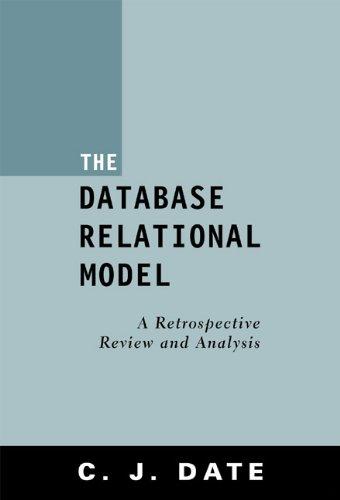Question
Create a DFD and ER Diagram for the following situation: 1 Introduction Montgomery Caregivers is an interfaith coalition in service since 1988. The goal is
Create a DFD and ER Diagram for the following situation:
1 Introduction
Montgomery Caregivers is an interfaith coalition in service since 1988. The goal is to offer a wide range of volunteer opportunities at no cost to the older adults served.
There are two types of people the organization needs to contact, clients and volunteers. Clients are people who are in need of help. They can request Montgomery Caregivers to send a volunteer to visit them to avoid isolation and loneliness.
Volunteers are the people who volunteer to offer social contact services.
The goal of this project is to create a database-driven web application that allows users (i.e., employees at Montgomery Caregivers) to keep track of information of clients, volunteers, and other related things. Users should be able to schedule events for clients, and match clients and volunteers based on certain criteria.
2 Requirements
This application is to be used by the employees (i.e., users) at Montgomery Caregivers.
A client can enroll the service by filling a form, specifying his/her personal information. The users then enter the information to the database. Whenever a client wants to change her (her=his/her) information, she will have to call the Montgomery Caregivers to have the changes made. The database will allow users to open a form containing all the information/historic data related to that client and modify her information. When a client is in need of help, she can call in and ask for assistance. This specific assistance is called a task. The users should enter the information about this task and later try to find a volunteer who matches that task.
The application should allow users to add/modify/delete volunteers information. When aclient requests for a task, the database will search for a matching volunteer(based on her available time slots). Later if there are a list of volunteers who satisfy the criteria, the user can manually choose one from the list. If the application cannot find a match, the user also has to manually find a match. When a volunteer is found, the user will call the volunteer and confirm that she can do the task. If she cannot, the user has to search again.
3 Information
3.1 Clients Each client is identified by a Client ID, which is automatically created by the application. Of course, she has her last name, first name, gender, start date (the date she enrolled), and date of birth. There are some additional types of information. First is her contact information. This group of information contains: home address, phone number, cell phone, e-mail, and a general instruction which specifies how to reach her home. The second type is her personal information: whom she lives with {lives with spouse, lives with children, alone}.The third type of information is about the tasks requested by the client in history.This part will be explained later independently as it is the core of this application
3.2 Volunteers
A volunteer has more information. Like clients, volunteers have their last names, first
names, genders, and start dates (the date enrolled). They also have their contact information and personal information (whom she lives with). As clients only require social contact service on weekends, the users need to know on Saturday and Sunday the volunteers available time slots (Morning, Afternoon). For example, on Sunday a volunteer may be avaliable in the morning only, or in the afternoon only, or in both, or none. When a volunteer enrolls, she should indicate her avaliable time on Sunday and Saturday. She may say she is free on Sunday afternoon. So after choosing a volunteer to do a task, the users should contact her to check her avaliability. She may accept or reject the task. Her acceptance and rejection should be recorded. If a volunteer agrees to do a task on a specific date, users may contact the client to verify that the task has been done after that date. This information (who finished which task) should also be recorded. Of course, information about which tasks a volunteer has done or will do is also needed. All information should be offered when a user opens a form to modify/ add volunteers' information.
3.3 Tasks
Each task is associated with a client who requested the social contact service and a volunteer who did or will do the task. A task should have a client, but it may not have a volunteer if the user has not assigned a volunteer to the task. Each task is/was done at a specific time (morning or afternoon) on a specific day (Sunday or Saturday).
4 Searching
A client calls in to ask for a service at a specific time (morning or afternoon) on a specific day (Saturday or Sunday). The user types in the task information and then opens a form which automatically shows a list of volunteers who are free at that time. The user then can assign a volunteer on the list to the task.
Step by Step Solution
There are 3 Steps involved in it
Step: 1

Get Instant Access to Expert-Tailored Solutions
See step-by-step solutions with expert insights and AI powered tools for academic success
Step: 2

Step: 3

Ace Your Homework with AI
Get the answers you need in no time with our AI-driven, step-by-step assistance
Get Started


